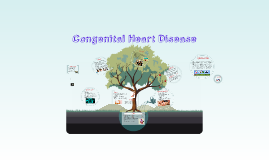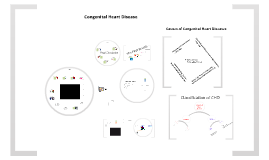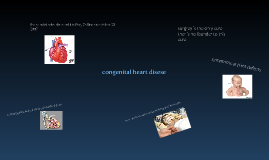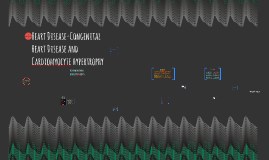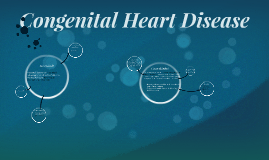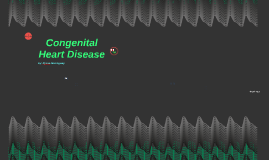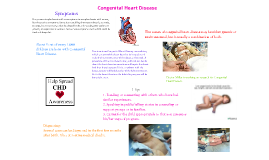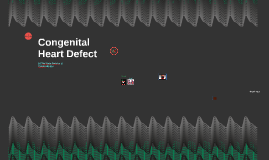Congenital Heart Disease
Transcript: Preventing Damage http://www.gabriellesride.com/about.htm Trivia Video The cause is unknown with majority of people with Congenital Heart Disease Genetic or Chromosomal abnormalities in the child may be a cause Medication, drugs or alcohol during pregnancy Maternal viral infections such as measles during the first trimester of the pregnancy Detection Many Congenital Heart Diseases are detected before birth Use a Echocardiography on the fetus to create a picture of the heart Can diagnose the disease based on the ultrasound Other ways to detect Heart Disease after birth are: Electrocardiogram, Chest x-ray, Pulse Oximetry, Cardiac Catheterization Treatment Many do not show signs Rapid breathing Cyanosis (blueish tint to lips, skin, fingernails) Fatigue Poor blood circulation Usually only shown in newborns Week 5- The heart begins to form Week 6- The heart begins to pump blood These 2 weeks are the most crucial to the babies heart development. When during the prenatal development is the most damage done? Prevention If you would like to volunteer, ride or come to the event visit: Congenital Heart Disease Signs and Symptoms Congenital Heart Disease occurs at birth It happens when the blood vessels near the heart does not develop fully before birth It is present in about 1% of live births Causes more deaths in the first year of life then any other defects Defects occur when the fetus is developing in the uterus Affects approximately 1 and 100 children Summary Not everyone with a congenital heart defect needs treatment, but for those who do some options are... Surgical Procedures Cardiac Catheterization Heart Transplants Lots of additional medication 1) What week in the pregnancy does the heart begin to form? 2) Name 2 ways to try to prevent a congenital heart defect? 3) Name 3 long term effects of congenital heart disease. Gabrielle's Ride Long Term Effects Most congenital heart defects can not be prevented during pregnancy The women should obviously avoid tobacco, alcohol and any non-prescription medication The women should just be as healthy as possible and act as if she would with any normal healthy pregnancy Danger to the Developing Fetus Gabrielle's Ride is a charity cycle that takes place annually in Oakville. There is a tyke ride, a family 25km ride, a 50km ride and a 100km ride you can participate in, you can volunteer or just come the the music, games and fun. We raise money in support of SickKids Foundation primarily towards Congenital heart disease. Causes The critical time for prevention is before pregnancy Get the vaccine for rubellus (measles) Take prenatal vitamins when pregnant The fetus will have issues developing properly There brain, eye sight and breathing may be affected With this disease during the pregnancy the blood flow is weak causing it not to circulate properly through the body Blood clots Heart failure Heart rhythm problems Pulmonary hypertension (shortness of breath, extreme tiredness, dizziness) Endiocarditis (muscle and joint pain, loss of appetite, night sweats, shortness of breath) Respiratory tract infection impaired memory






